Often, carpets are seen in snippets — peeking out from under coffee tables and sofas. That means their intricacy and detail can sometimes be overlooked. The pieces that make up Obeetee’s new Viraasat, however, are meant to be marveled at in their entirety. Launched last month at an event in New Delhi, it brings together four designers — Tarun Tahiliani, Anju Modi, Anita Dalmia and Ashdeen Z. Lilaowala. Each has interpreted the country’s rich cultural heritage in their own way. Dalmia, as a lifestyle designer, is known for her wallpapers, cushions and more, while the other three are leading fashion designers.
Anita Dalmia
| Photo Credit:
Special arrangement
“With Viraasat, we wanted to capture the timeless beauty of Indian weaving, crafted perfectly to fit into the modern-day décor narrative,” says Angelique Dhama, president, Obeetee Carpets – Retail. “This collection is particularly special because it features carpets that can be great for your wall just as much as the floor and can be gifted as a trousseau, symbolising the beginning of a new journey,” she adds.
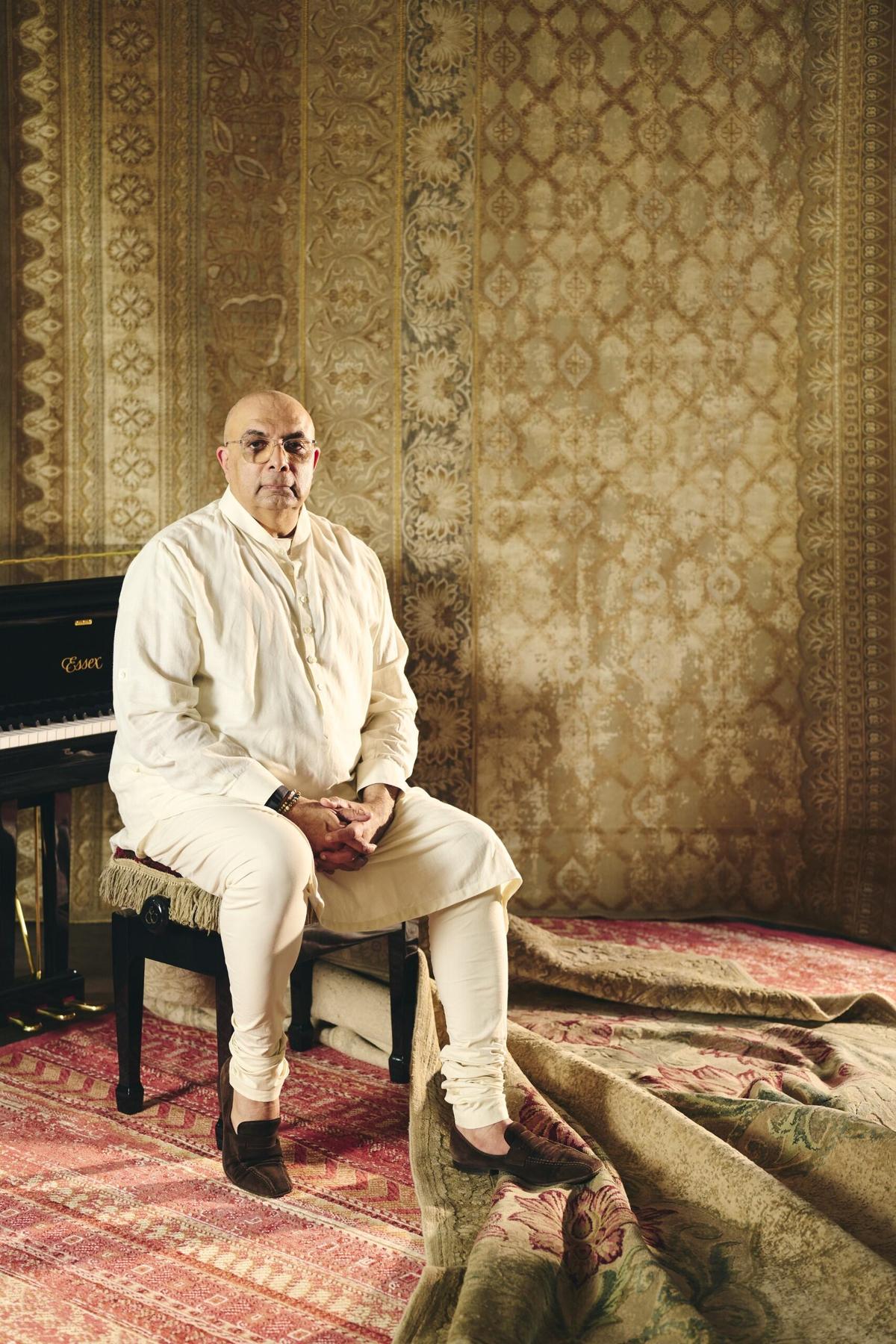
Tarun Tahiliani
| Photo Credit:
Special arrangement
This isn’t the first time the brand is collaborating with designers. In the past, they’ve worked with JJ Valaya, Shantanu & Nikhil and Tahiliani as well. Dhama says, “All these designers bring a unique artistry to the table, but what unites them is their deep appreciation for Indian craftsmanship. For example, in the past, Tarun Tahiliani drew inspiration from Chikankari embroidery, Abraham & Thakore from handwritten letters and bandhani and Ikat, Shantanu & Nikhil from India’s regimental past, and JJ Valaya from jamavar and paisleys. Through these collaborations, we learned that carpets don’t need to be confined to traditional solid, contemporary, or Persian designs. Instead, they can serve as a canvas for diverse forms of artistry, integrating elements like embroidery that were traditionally reserved for apparel. This opened our eyes to the vast potential of carpets as vehicles for storytelling and cultural expression, pushing the boundaries of what carpet design can be.”
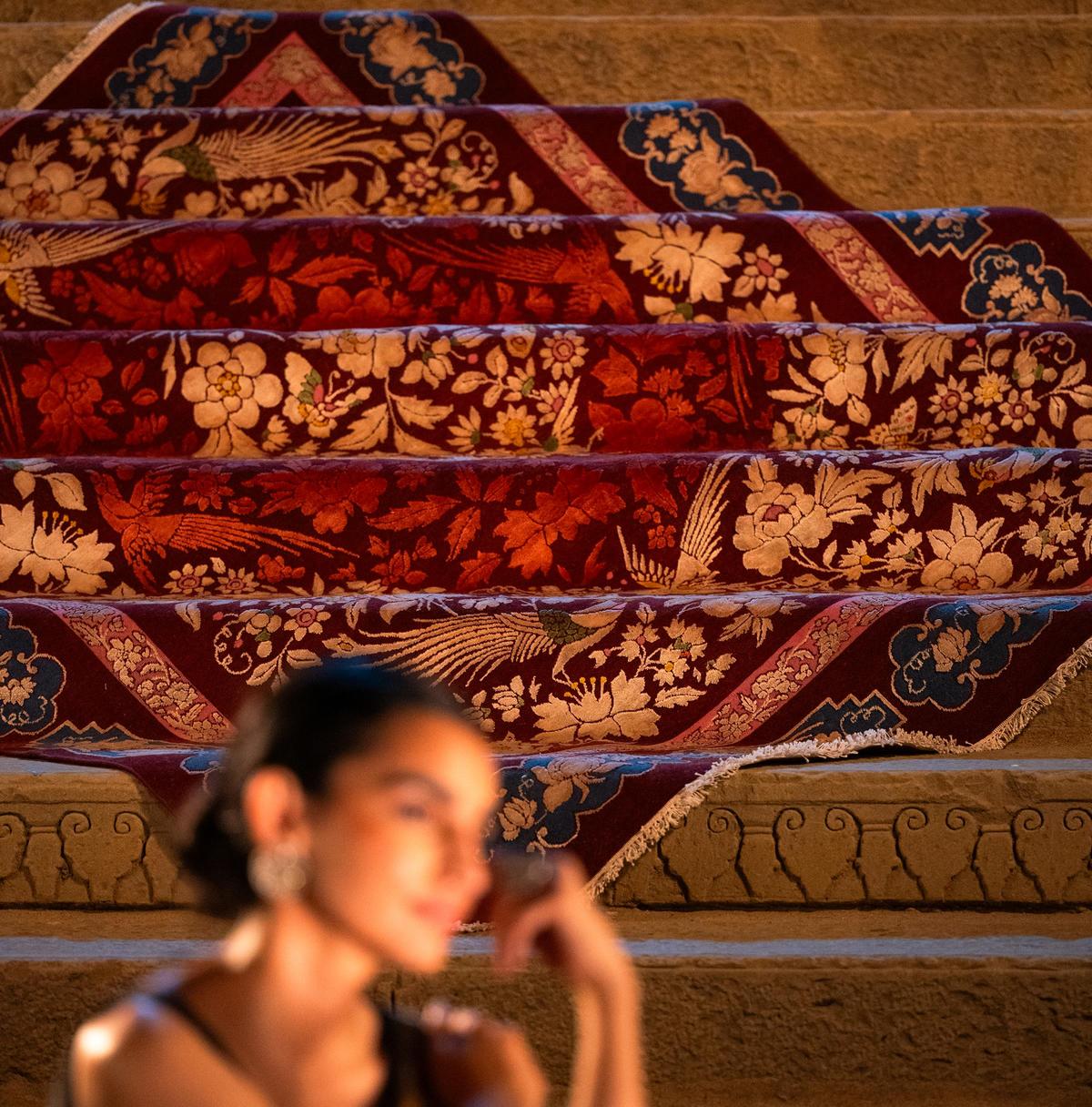
The designs of the Viraasat collection features everything from Mughal Gardens to Asian-inspired cranes, and draws from India and its many techniques, designs and vistas. “We chose to work with multiple designers because we wanted Viraasat to be a tapestry of different perspectives. Each designer has their own unique voice and vision, which allows us to tell a richer, more layered story. Indian heritage is incredibly diverse, and we felt that we should translate that diversity through design by bringing together the industry’s most celebrated creative maestros,” says Dhama.
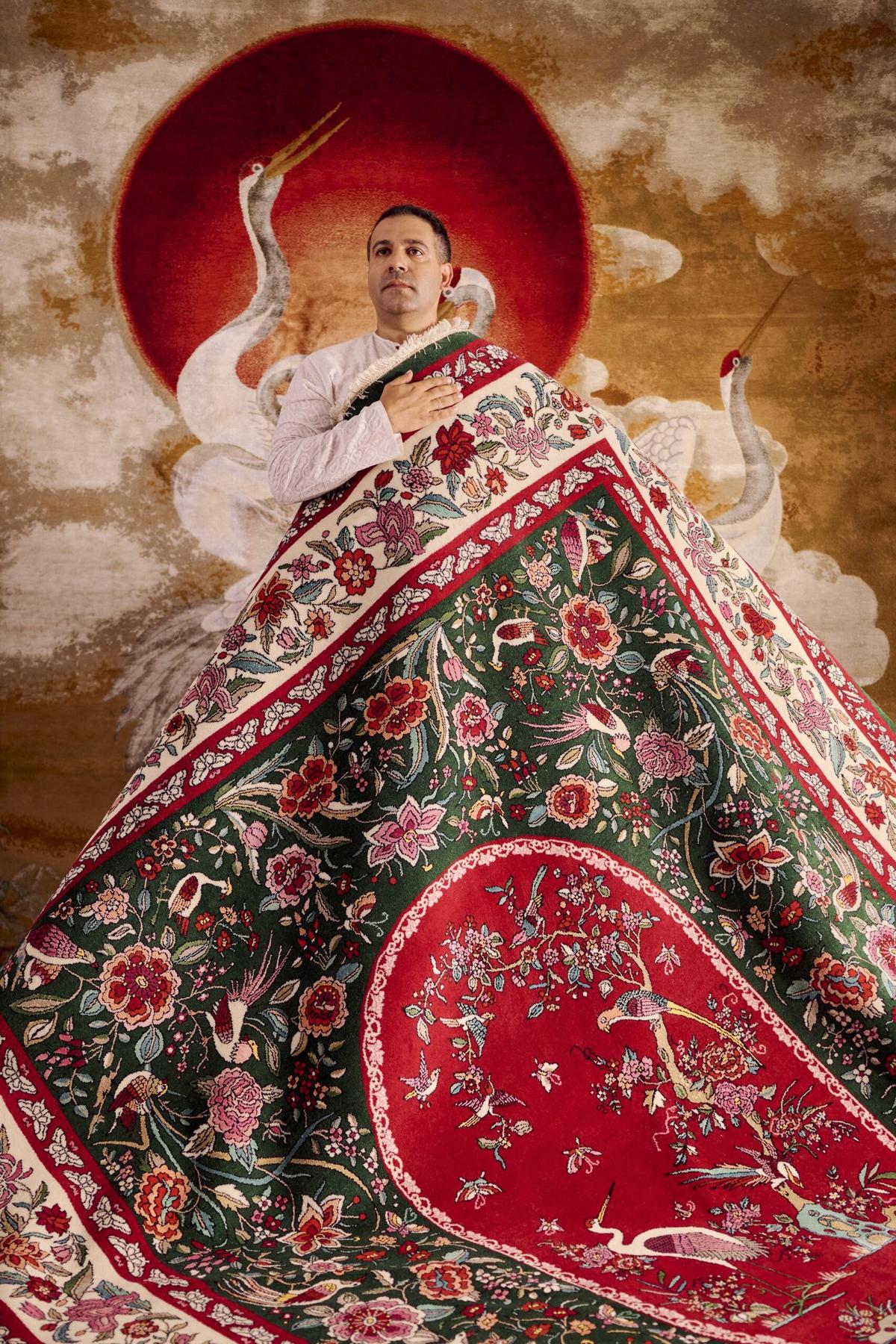
Ashdeen Z. Lilaowala
| Photo Credit:
Special arrangement
Inspiration in Rajasthan
Each of the 104-year-old company’s rugs is handmade by the brand’s craftspeople in Bhadohi, Uttar Pradesh, which like Mirzapur has weaving clusters steeped in artistic heritage. Dhama notes that both hand-knotting and hand-tufting have been used here to ensure that they can be purchased by a wider audience. She explains, “While we remain committed to traditional hand-knotting techniques for the premium range in the collection, we have also crafted some rugs using the hand-tufting technique to cater to homeowners who are looking for economical options.”
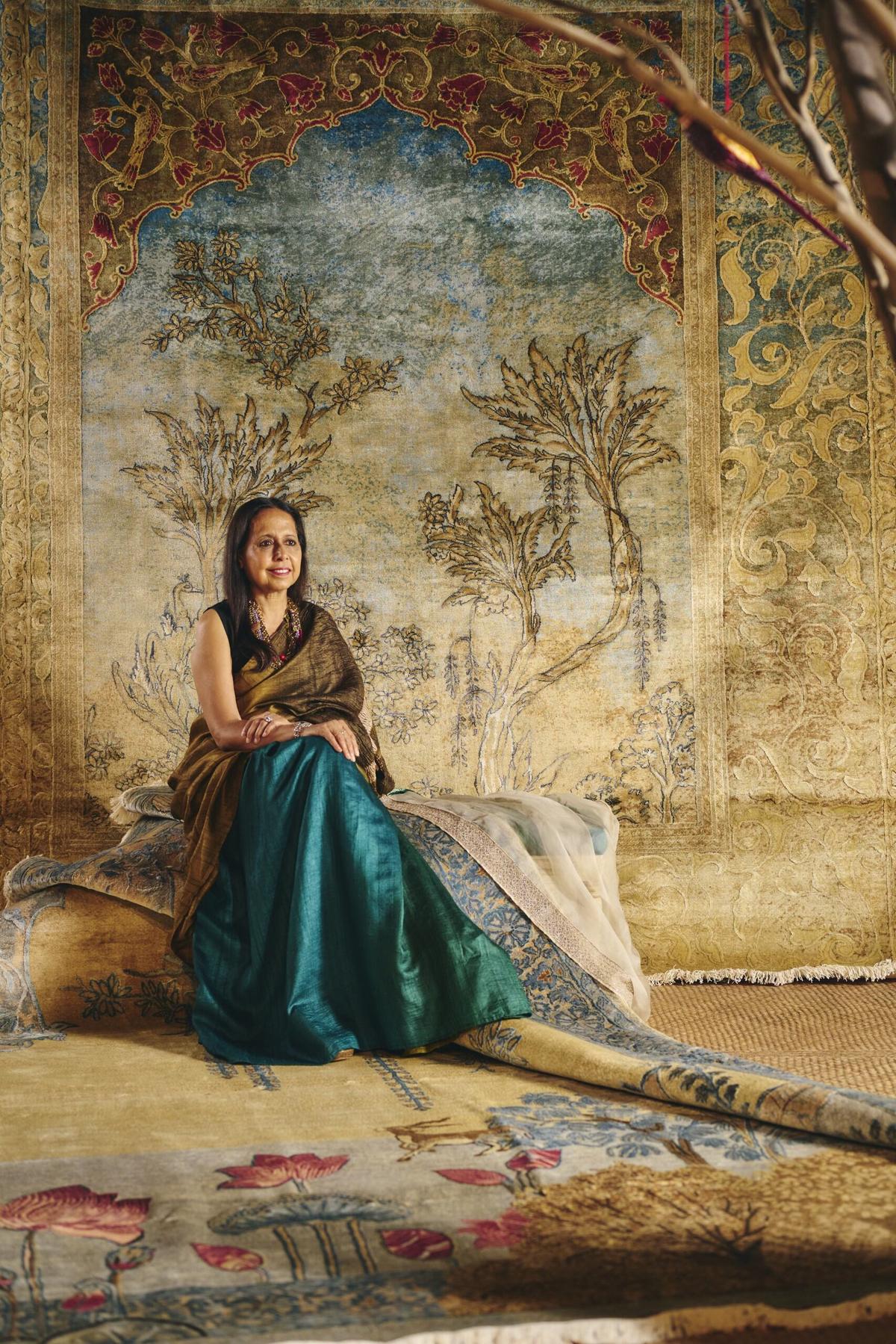
Anju Modi
| Photo Credit:
Special arrangement
For designer Anju Modi, who has created costumes for movies, her designs take inspiration from Rajasthan’s art history. She says, “I embarked on a journey to explore the rich cultural heritage of Rajasthan, where I discovered the ancient art of Kishangarh painting. This traditional art form, with its intricate black-and-white outlines and meditative thoughts, captivated me.” As a result, her two designs feature thick black and white outlines on dual-toned lotuses, and for flora snaking skywards. “I found inspiration in the Kishangarh painting process, and the vibrant colours and intricate patterns of Vrindavan’s textiles,” she says.
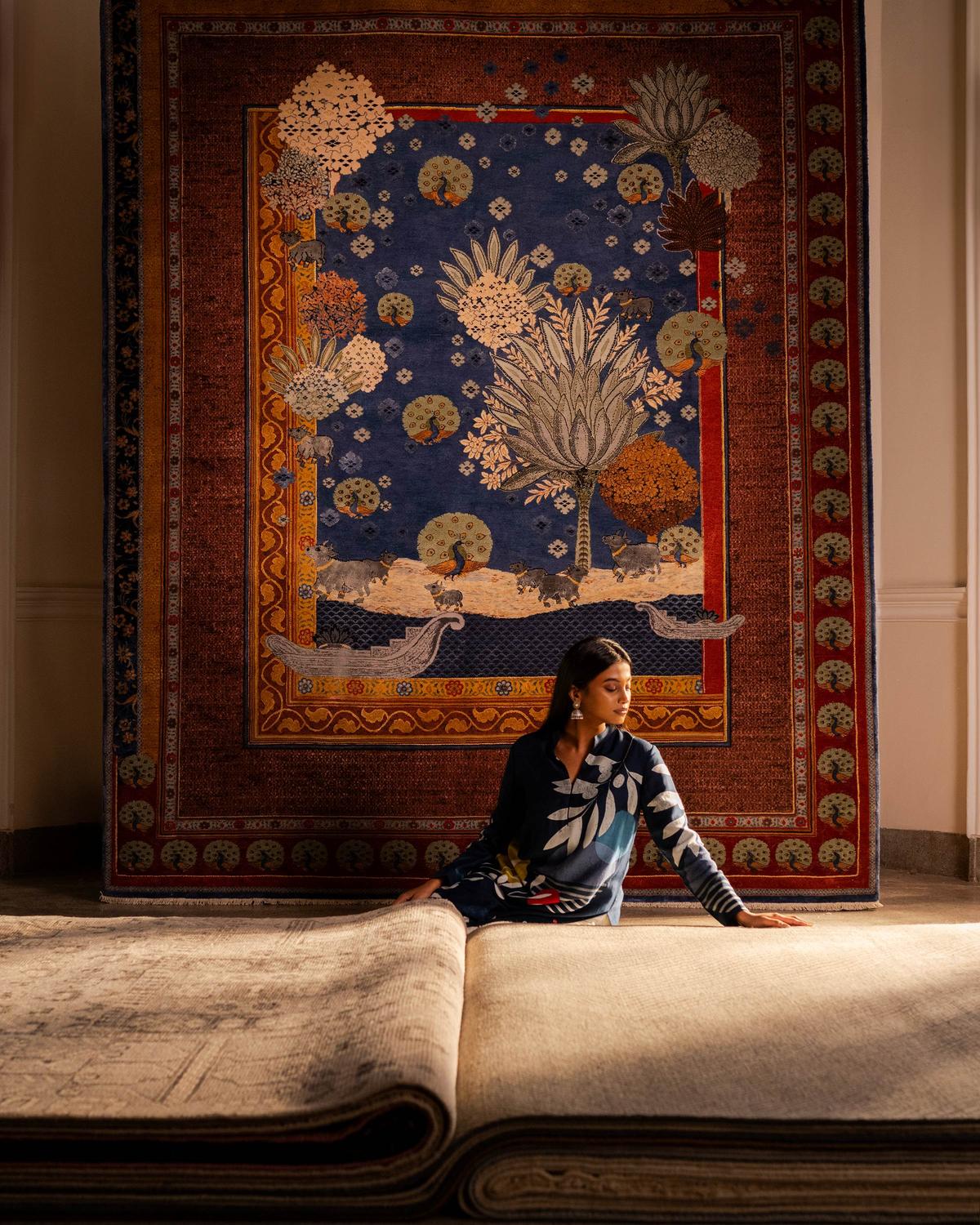
Dhama confirms that there’s a growing interest in designs that resonate with cultural and spiritual significance. “Customers are looking for pieces that not only beautify their spaces but also hold deeper meaning.” As a result, pieces like Journey Within by Anita Dalmia features Krishna’s temple in Vrindavan, while both Tarun Tahiliani and Ashdeen Z Lilaowala focus on the country’s varied avifauna, with standouts rendering the peacock and the crane beautifully. Tahiliani’s designs take inspiration from Kashmiri kashidakari embroidery and traditional Pichwai paintings, while Lilaowala draws on Persian and Oriental influences.
As a result, pieces like Journey Within by Anita Dalmia features Krishna’s temple in Vrindavan, while both Tarun Tahiliani and Ashdeen Z Lilaowala focus on the country’s varied avifauna, with standouts rendering the peacock and the crane beautifully. Tahiliani’s designs integrate inspiration as diverse as Kashmiri kashidakari embroidery and traditional Pichwai paintings, while Lilaowala’s designs draw on Persian and Oriental influences.
Step on luxury
Tufted carpets (5×8) – ₹67,200 upwards
Knotted carpets (9×6) – ₹2,78,000 upwards
Working with artisans, Modi was struck, she says, “by their dedication and skill. I learned that the process of creating these carpets is not just about technique, but also about the collective spirit and devotion that drives their creativity.”
The writer is based in Mumbai.
Published – September 12, 2024 06:00 pm IST